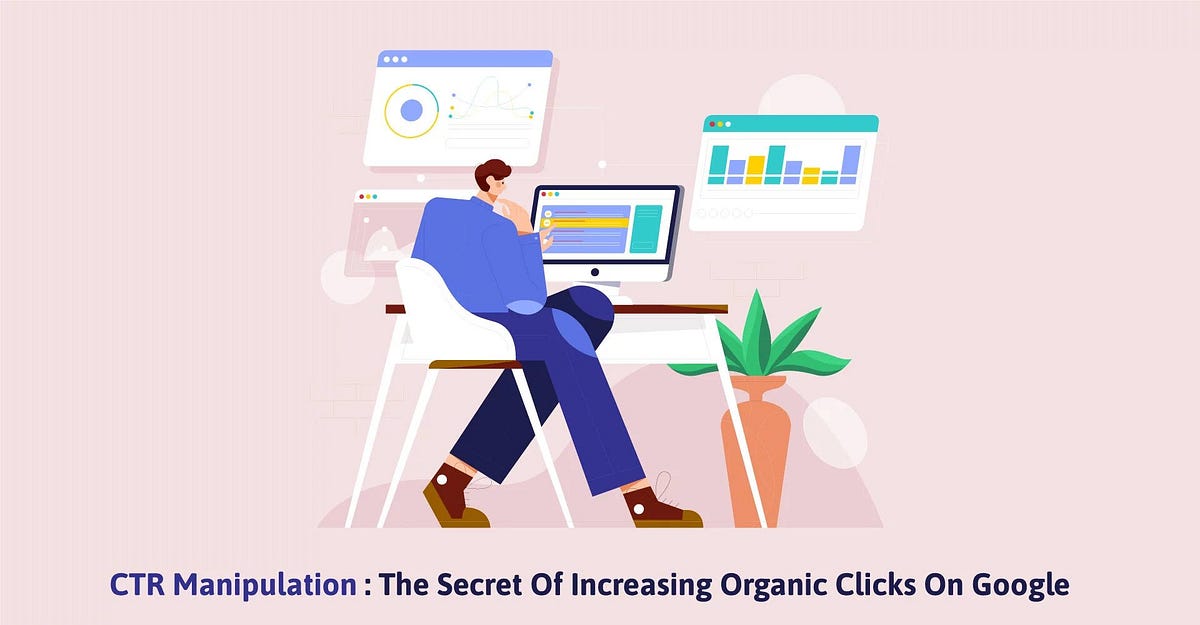Achieving Greater CTR: The Benefits of Adjustment Strategies
In the affordable landscape of electronic advertising and marketing, accomplishing a greater click-through price (CTR) is a crucial objective for businesses seeking to enhance their on the internet presence. The critical application of control methods-- such as urgency motivates and mental triggers-- can dramatically boost user engagement and conversion rates. Nevertheless, while these techniques can generate outstanding results, they likewise raise important ethical concerns that marketing experts should navigate. The effects of these strategies are diverse, triggering a closer exam of their effectiveness and sustainability in the lengthy term. What honest boundaries should be taken into consideration?
Understanding CTR and Its Value
Click-through rate (CTR) is a vital statistics in electronic marketing, mirroring the percentage of customers that engage with an ad or web link compared to the total variety of customers who view it. This metric functions as a necessary indicator of the efficiency of advertising campaigns, offering insights into customer involvement and material significance. A higher CTR suggests that the material reverberates well with the target market, driving even more traffic to the desired location, whether it be an internet site, touchdown page, or online shop.
Recognizing CTR is essential for online marketers as it directly associates with conversion rates and roi (ROI) A reduced CTR can signify that the web content might be misaligned with the target market's interests or that the advertisement does not have allure. Consequently, examining CTR allows marketers to recognize locations for improvement, optimize their strategies, and customize their messaging to far better connect with possible customers.
Moreover, CTR plays a significant duty in search engine optimization (SEARCH ENGINE OPTIMIZATION) and pay-per-click (PAY PER CLICK) advertising, affecting ad positionings and costs. By understanding CTR and its ramifications, marketing professionals can make informed choices that boost their overall campaign efficiency, eventually resulting in raised sales and service development.
Common Adjustment Techniques
In the mission to enhance CTR, marketers frequently use numerous adjustment strategies developed to attract individual attention and encourage interaction. These techniques can substantially affect customer behavior and decision-making procedures.

An additional widespread adjustment method is the execution of necessity. Expressions like "restricted time deal" or "just a couple of left" develop a feeling of shortage that triggers prompt activity. This technique plays on the fear of losing out (FOMO), engaging individuals to act swiftly.
Furthermore, the addition of strong phone calls to action (CTAs) is important. Effective CTAs are clear, succinct, and commonly use action-oriented language, such as "Start" or "Discover A lot more," assisting users toward the preferred activity.
Finally, customization can improve CTR. By customizing material to private preferences and actions, marketing experts can create an extra relevant experience, enhancing the opportunities of engagement. Utilizing these control strategies enables marketers to enhance their approaches and accomplish greater CTR.
Psychological Triggers for Interaction

One more efficient psychological trigger is social proof. By showcasing testimonials, reviews, or user-generated web content, marketers can promote trust and verify the worth of their offerings. When possible customers see others engaging with a brand name, they are more probable to do the same.
Furthermore, the use of curiosity can drive involvement. Stimulating passion with fascinating headings or questions motivates customers to click for more information. Sob stories-- such as stimulating nostalgia, happiness, or fear-- can also substantially impact individual actions, making material a lot more relatable and shareable.
Eventually, leveraging these mental triggers can develop an engaging narrative that resonates with audiences, urging them to involve even more deeply with marketing products and eventually boosting CTR. (LinkDaddy CTR Manipulation)
Honest Factors To Consider in Marketing
Advertising methods commonly walk a great line in between persuasion and manipulation, making ethical considerations vital in the quest for greater click-through prices (CTR) As marketers increasingly take advantage of psychological triggers to improve engagement, they need to continue to be vigilant regarding the honest ramifications of their strategies.
Making use of adjustment techniques, while reliable in increasing CTR, questions concerning consumer, openness, and honesty freedom. Exaggerated claims or deceptive advertisements can deteriorate consumer trust fund and damages brand name track record. Honest advertising demands a dedication to honesty, making certain that messages precisely stand for items and solutions.
Additionally, marketers need to think about the possible effects of their approaches on prone populations. Targeting at risk audiences with aggressive techniques can exacerbate existing inequalities and bring about exploitation. Striking a balance in between accomplishing company objectives and keeping moral stability is important for sustainable navigate to this site success.
Eventually, companies that prioritize ethical advertising and marketing practices not just foster depend on with their target market but also cultivate long-lasting partnerships, improving brand name commitment. In the affordable landscape of digital marketing, sticking to ethical standards is not just an ethical commitment however a calculated advantage that can distinguish a brand name from its competitors.
Best Practices for Application
Efficient execution of advertising and marketing approaches depends upon a clear framework that balances creativity with analytical rigor. To accomplish higher click-through rates (CTR), it is necessary to start with a well-defined target audience. Comprehending preferences, demographics, and habits permits marketing professionals to customize messages that resonate efficiently.
Next, A/B testing is crucial. By try out different headlines, visuals, and calls-to-action, marketing professionals can determine which components drive involvement. Continual optimization based upon information analytics ensures that campaigns continue to be effective and pertinent.

Additionally, find out here now incorporating user responses is crucial for iterative renovation. Frequently soliciting input from customers can give useful insights right into important site what resonates and what requires change.
Finally, tracking performance metrics is vital. Keeping an eye on CTR alongside other essential performance signs allows online marketers to examine the efficiency of their strategies and make data-driven choices for future projects. By adhering to these best methods, marketers can maximize their initiatives and achieve lasting enhancements in CTR.
Verdict
In conclusion, the application of adjustment strategies to accomplish a greater click-through rate (CTR) provides substantial benefits for marketing professionals. By harnessing engaging visuals, necessity, and emotional triggers, businesses can improve individual engagement and drive conversions - LinkDaddy CTR Manipulation.
Click-through rate (CTR) is a vital statistics in electronic marketing, reflecting the percent of customers who involve with a promotion or link contrasted to the complete number of users who view it. Employing these control methods permits marketing professionals to maximize their approaches and achieve greater CTR.
Recognizing psychological triggers for interaction is crucial for marketers seeking to boost CTR successfully. Checking CTR along with various other vital efficiency signs allows online marketers to examine the efficiency of their techniques and make data-driven decisions for future campaigns.In final thought, the execution of manipulation methods to achieve a greater click-through price (CTR) offers substantial advantages for marketing professionals.